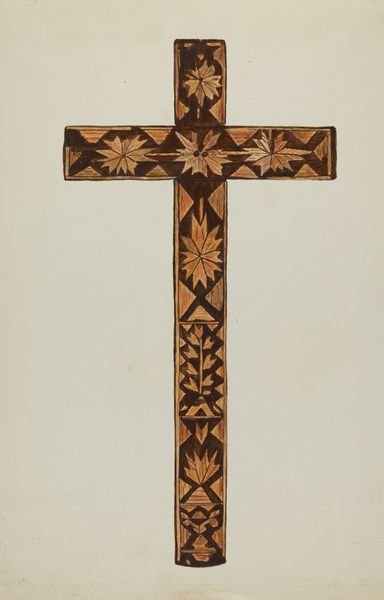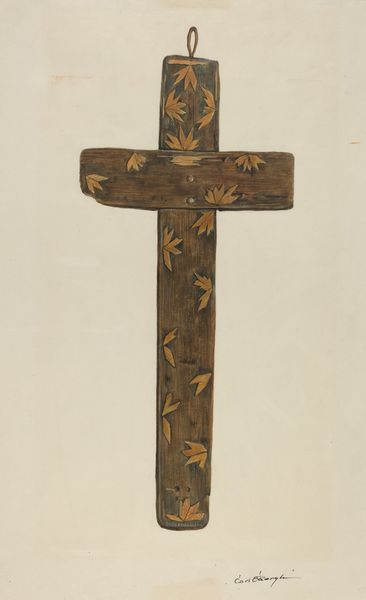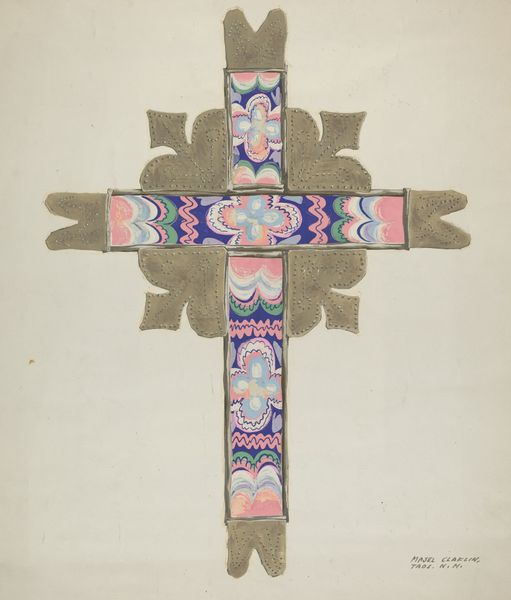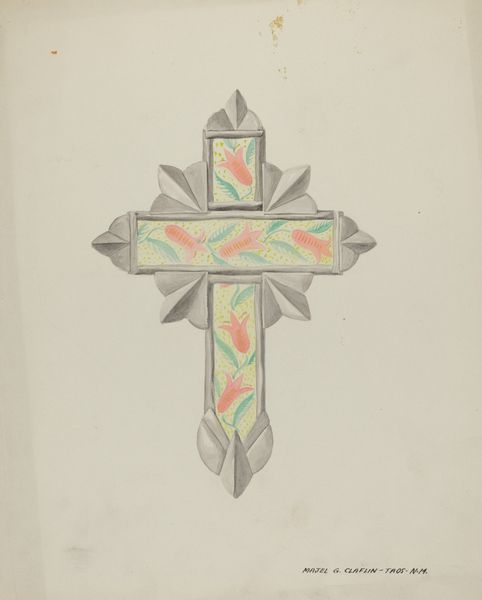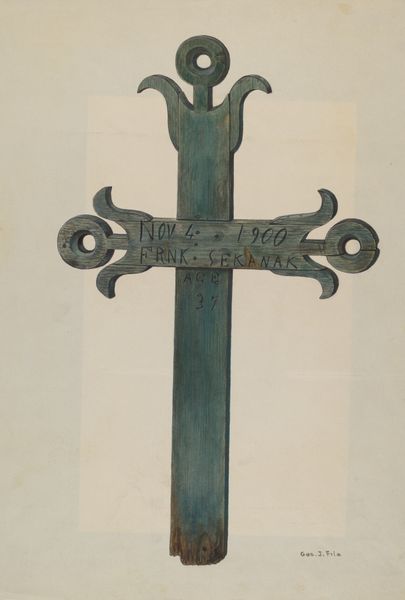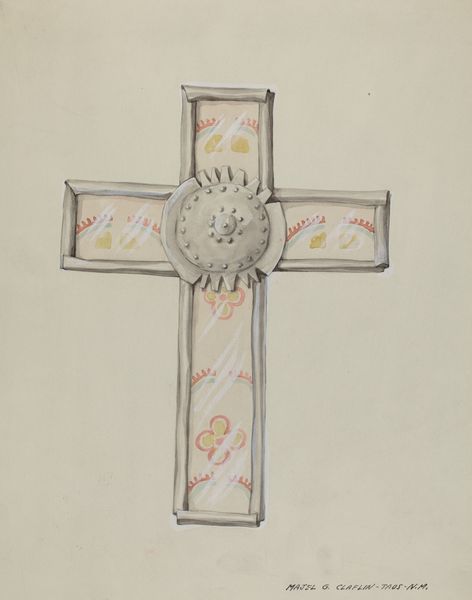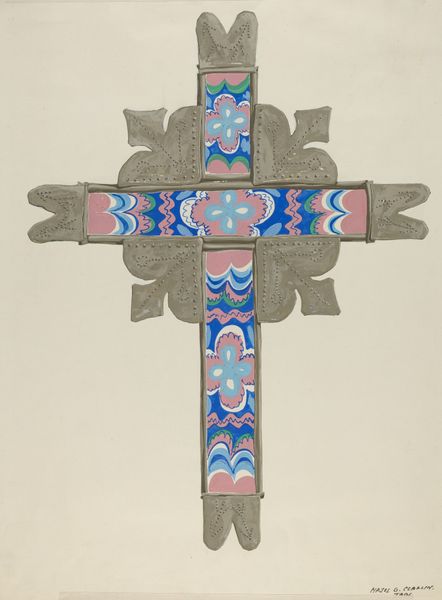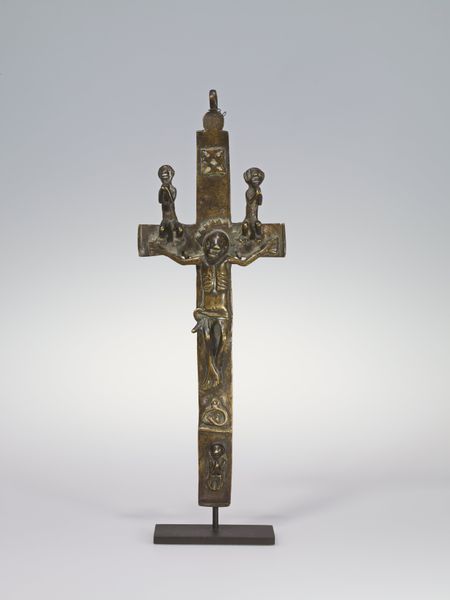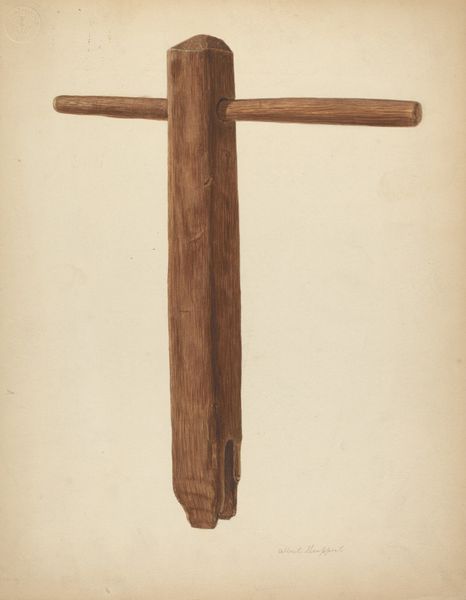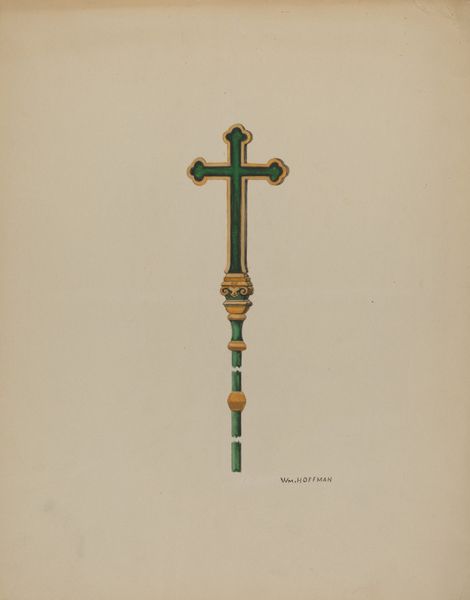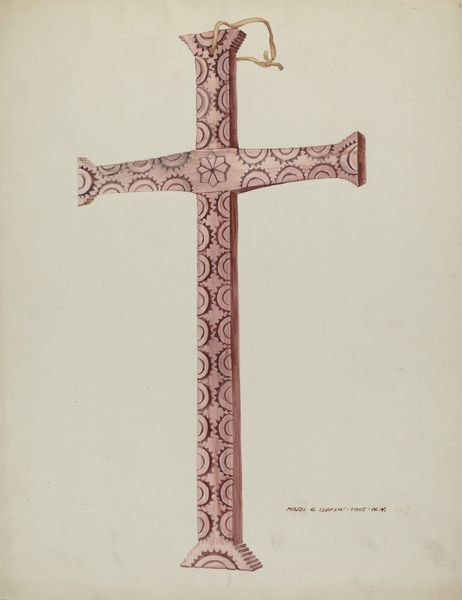
drawing, carving, pencil, wood
#
portrait
#
drawing
#
carving
#
figuration
#
pencil
#
wood
#
academic-art
Dimensions: overall: 30.6 x 22.9 cm (12 1/16 x 9 in.)
Copyright: National Gallery of Art: CC0 1.0
Editor: This is a drawing from around 1937, called "Cross," by Carl Keksi. It depicts a wooden cross, maybe a design for a carved piece, and the rendering feels very formal. What do you see in this piece? Curator: The Cross, seemingly simple, speaks volumes about cultural identity and the intersection of faith and artistry, especially given the period. The academic rendering highlights a tension, doesn’t it? It seems to elevate the cross, but also flattens the spiritual resonance through a very controlled and deliberate style. Editor: I hadn’t considered that flattening effect. How does that tension tie into the broader narratives you mentioned? Curator: Well, think about the era. The late 1930s witnessed rising nationalism and anxieties around identity across Europe. Visual representations of religious symbols could, consciously or unconsciously, align with or resist prevailing political ideologies. Does the artist monumentalize the cross, thus supporting an ideology? Or does he aim at the opposite? Editor: It’s fascinating to think of a seemingly straightforward image as engaging with those tensions. The carvings within the cross itself—are they relevant? Curator: Absolutely! Those details open avenues for exploration. Consider what figures are depicted, the techniques used for carving. It could connect to conversations around power structures within the Church, or how spiritual symbolism gets intertwined with patriarchal narratives. This becomes an act of reading the visible to reveal the invisible ideologies at play. What does it make you consider about faith? Editor: I see it so differently now! Thanks for showing me how art can actively participate in culture. Curator: Precisely. And sometimes, our act of viewing can become participation, too!
Comments
No comments
Be the first to comment and join the conversation on the ultimate creative platform.
